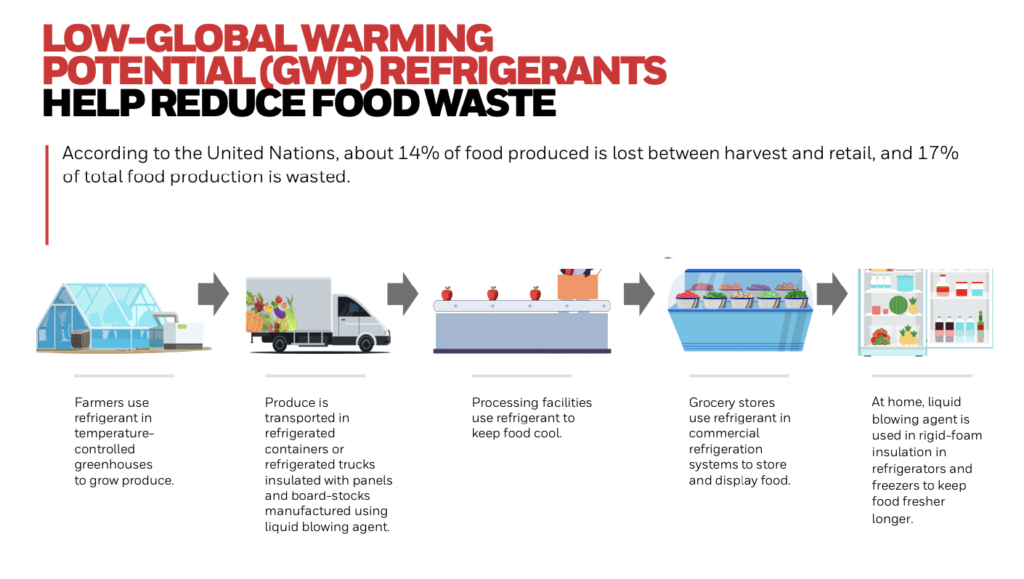There is good news around if you look for it: businesses are rolling up their sleeves and leading the change in the energy revolution; major global corporations are embedding sustainability into their operational strategies; partnerships between the public and private sectors are helping find solutions critical to tackling climate change. The journey to a carbon neutral world will not be possible without technology.
Organizations are already working across a vast portfolio of sustainability-focused technologies, from innovative systems to make urban infrastructure smarter and less energy intensive, to decarbonization offerings and solutions for harnessing alternative fuel sources such as hydrogen and renewables.
“We cannot advance sustainability pledges without innovation from the private sector.”
Anne T. Madden Senior Vice-President and General Counsel, Honeywell International Inc.
But the public sector must also innovate. Advances in regulatory and policy frameworks and financial structures are key to creating the market conditions for sustainable technology to flourish and to ensure continued private sector investment in the most promising emerging areas. Here are some existing technologies that have been the result of similar efforts:
1. Renewable Fuels
Aviation is one of the rapidly growing sources of greenhouse gas emissions. This is one area where industry has made significant progress and where technological solutions already exist, these alternative technologies are able to produce sustainable aviation fuel (SAF) that meets and exceeds jet fuel standards for performance. Alternative fuels It can be made with a variety of feedstocks, including vegetable oils, animal fats and non-food-based, and second-generation feedstocks such as camelina, jatropha and algae.
However, public-private partnerships are needed to scale up the deployment and use of this technology in transportation systems. Collaboration needs to continue between global governments and industry to ensure that regulations being developed are consistent, clear and realistic with where SAF markets and related feedstocks are today. Doing so can help speed the adoption of sustainable fuel across global markets.
Governments need to coordinate with international partners to encourage the use of a range of widely available, economically viable, sustainable feedstocks. This will help address feedstock constraint issues as these markets develop.
2. Low Global Warming Potential Molecules
Small molecules can make a big impact when it comes to reducing emissions. The need for low global warming potential alternatives has led scientists to develop hydrofluoroolefin (HFO) technology that is used in the form of propellants, aerosols, blowing agents and refrigerants.

Low global warming refrigerants can be used in everyday products, including for personal and household care, air conditioning for cars, refrigerants for supermarkets, blowing agents for insulation, and solvents for cleaning Image: Honeywell
Hydrofluoroolefin are unsaturated organic compounds composed of hydrogen, fluorine and carbon similar to HFCs. HFOs are olefins also known as alkenes. Hydrofluorocarbons are extensively used as refrigerants and in other applications such as blowing agents however, HFCs are potent greenhouse gases with a high global warming potential which can deplete the ozone layer.
Hydrofluoroolefin are an alternative to hydrofluorocarbons, with zero ozone layer depletion and low GWP. Hydrofluoroolefin are the fourth generation of refrigerants which presents a strong case as an alternative to the refrigerants depleting ozone layer
These innovative technologies can help users to reduce their greenhouse gas emissions and can improve energy efficiency without sacrificing performance. It is used in everyday products, including for personal and household care, air conditioning for cars, refrigerants for supermarkets, blowing agents for insulation, and solvents for cleaning. These products have helped avoid the release of high global warming potential molecules equivalent to more than 295 million metric tons of carbon dioxide into the atmosphere, equal to carbon sequestered by 110 billion trees.*
3. Sustainable Buildings
Buildings account for approximately 37% of the world’s direct and indirect CO2 emissions. Occupants have higher expectations than ever of these buildings – expectations that a building’s indoor air quality will support their well-being and use less energy. These are big expectations, but ones we’re ready to meet. Buildings Sustainability Manager solutions can help building owners and operators meet these two pressing, yet often conflicting, objectives: reducing the environmental impact of buildings while optimizing indoor air quality.
All these technologies are available today, but the public sector need to innovate too. It took the world more than a century to carbonize, but there is not that time available to decarbonize. We need to create the right environment to support a technology-led transition that is both timely and sustainable in the long-term.
* Calculations are estimates based on past and present sales of Honeywell Solstice HFO products from 2015 to 2022 (including forecasted estimates of current year sales), comparing the difference in GWP of those products to the HFCs and/or HCFCs they replaced. All GWP values are from “Climate Change 2013: The Physical Science Basis. Contribution of Working Group I to the Fifth Assessment Report of the Intergovernmental Panel on Climate Change, Cambridge University Press.

